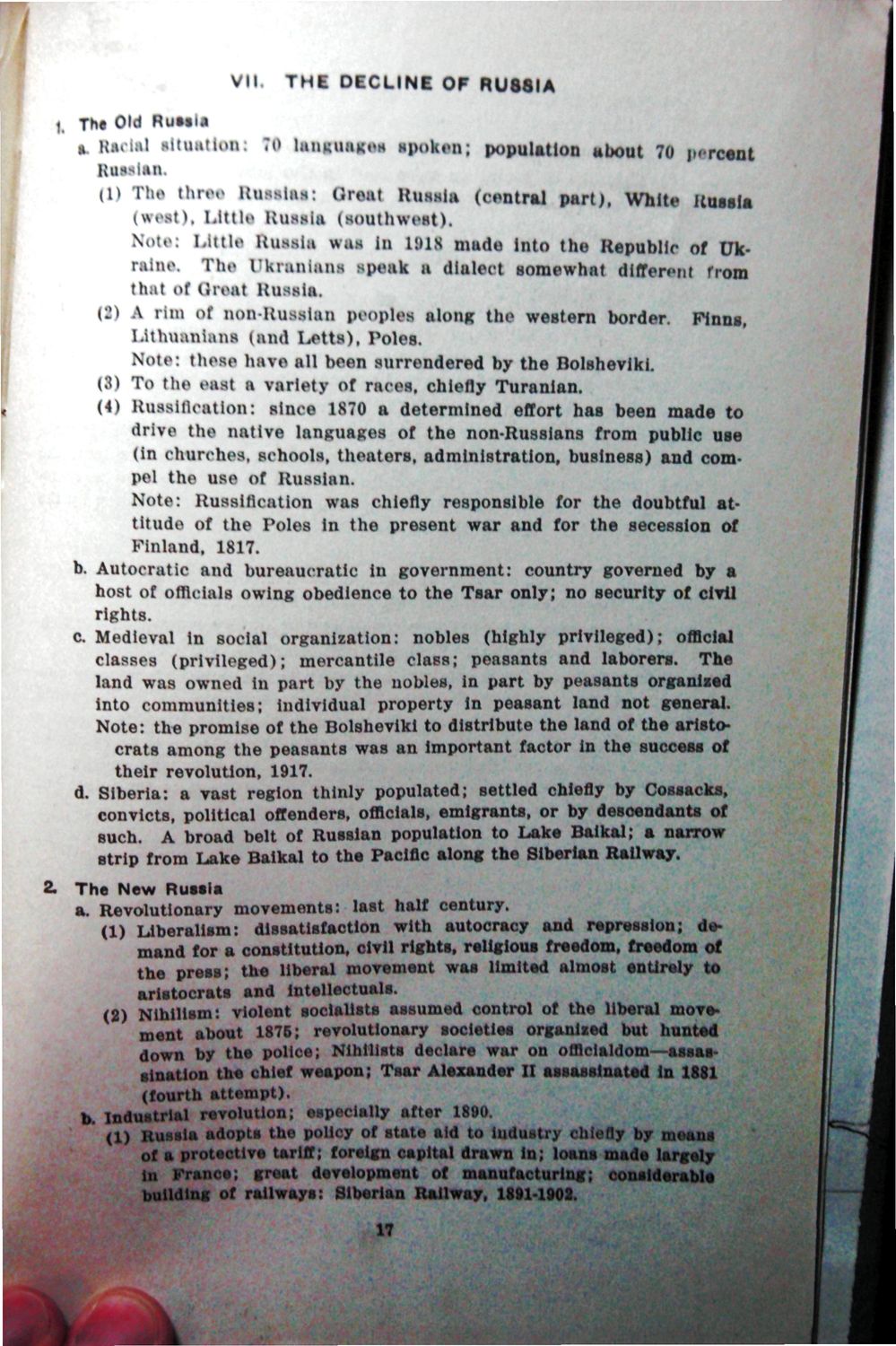| |
| |
Caption: War Publications - WWI Compilation 1923 - Article 49
This is a reduced-resolution page image for fast online browsing.

EXTRACTED TEXT FROM PAGE:
VII. j, The Old Russia T H E DECLINE OF RUSSIA spoken; population a Racial i Russian (1) The three Russia*: (Iron! Russia (central part), White Russia (west). Little Russia uwthwest). Nolo: Little Russia was in 191S made into the Republic of Ukraine. The rkranians speak a dialect somewhat different from that of Great Russia. (2) A rim of non Russian peoples along the western border. Finns, Lithuanians (and Letts), Poles. Note: these have all been surrendered by the Bolshevik*. (t) To the east a variety of races, chiefly Turanian. (4) RussitUation: since 1S70 a determined effort has been made to drive the native languages of the non-Russians from public use (in churches, schools, theaters, administration, business) and compel the use of Russian. Note: Russiflcation was chiefly responsible for the doubtful atand Finland. 1817. country civil rights. c. Medieval in social organization: nobles (highly privileged); official classes (privileged); mercantile class; peasants and laborers. The land was owned in part by the nobles, in part by peasants organised into communities; individual property in peasant land not general. aristopeasants was an important factor in the success their revolution, 1917. hinly populated; settled chiefly by Cossacks, d. convicts, political offenders, officials, emigrants, or by descendants of such. A broad belt of Russian population to Lake Baikal; a narrow strip from Lake Baikal to the Pacific along the Siberian Railway. 2. The New Russia a. Revolutionary movements: last half century. (1) Liberalism: dissatisfaction with autocracy and repression; demand for a constitution, civil rights, religious freedom, freedom of the press; the liberal movement was limited almost entirely to aristocrats and Intellectuals. (2) Nihilism: violent socialists assumed control of the liberal movement about 1875; revolutionary societies organised but hunted down by the police; Nihilists declare war on officialdom—assassination the chief weapon; Tsar Alexander II assassinated in 1881 (fourth attempt). h. Industrial revolution; especially after 1890. (1) Russia adopts the policy of state aid to industry chiefly by means of a protective tariff; foreign capital drawn in; loans made largely in France; great development of manufacturing; considerable building of railways: Siberian Railway, 1891-1908. 17 i 1
| |